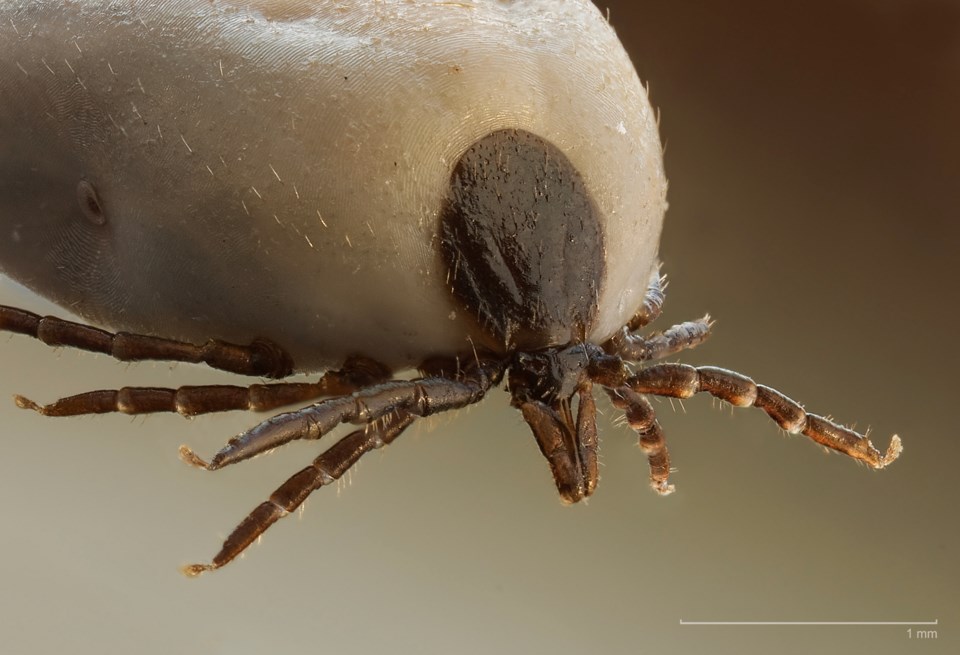The Sudbury and District Health Unit has found the first Lyme disease-positive tick of the summer season.
One blacklegged tick that was found locally has tested positive for the bacteria that can cause Lyme disease. This is the first positive tick reported in the Sudbury & District Health Unit’s service area this year.
Rachel O'Donnell, an environmental support officer, said the tick was brought into the health unit by a Sudbury resident who found it on their body.
Where in the Sudbury region the tick was found isn't that important, O'Donnell said, because ticks are common to the region.
She encourages anyone who finds a tick — on their body, in particular, but in the grass as well — to put it in a plastic bag or screw-top bottle, and bring it to the health unit or their doctor to be tested.
Caught early, Lyme disease is highly treatable with antibiotics, O'Donnell said.
You could avoid ticks by simply staying indoors, but who wants to do that? Thankfully, there are ways you can protect yourself from the little critters.
The region's assistant medical officer of health, Dr. Ariella Zbar, offered tips on how to protect yourself from ticks:
- Avoiding walking in tall grass and making sure yards are kept clear of debris and overgrown vegetation, grass, bushes, and trees;
- Keeping wood piles and bird feeders away from homes;
- Wearing a long-sleeved, light-coloured shirt, pants, and closed-toe shoes;
- Using insect repellents that are federally regulated and contain DEET, and by following the manufacturer’s instructions for their safe use;
- Checking your clothing, body, and pets for ticks and changing your clothing upon returning home from the outdoors;
- Taking a shower to help wash off ticks that have not yet attached themselves to the skin.
If you do find a tick on you, removing it properly with tweezers, as soon as possible, is important:
- Hold the tick gently with the tweezers, as close to its head as possible, and pull it out slowly;
- Afterwards, clean the skin area and apply a bandage if necessary; and
- Place the tick in a container and give it to your health care provider or local health unit for testing.
The health unit said ticks are most likely to transmit Lyme disease after being attached to the skin for more than 24 hours of feeding.
A typical signs of the disease is a rash that looks like a bull’s eye, with the bite area being surrounded by a round, red rash.
Other symptoms of Lyme disease can include fever, headache, and muscle and joint pain. If left untreated, Lyme disease can cause serious problems to the heart, joints, and nervous system.
